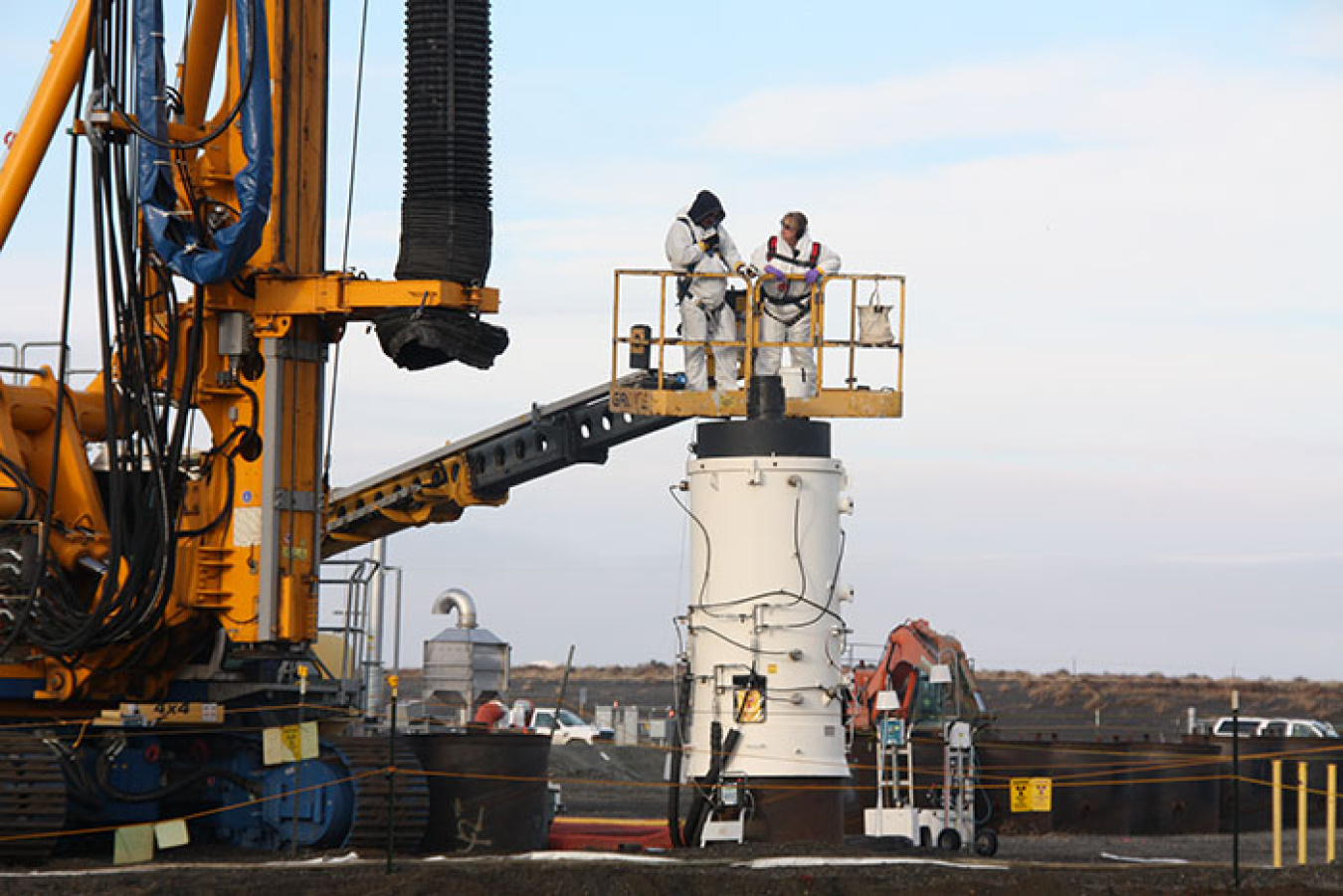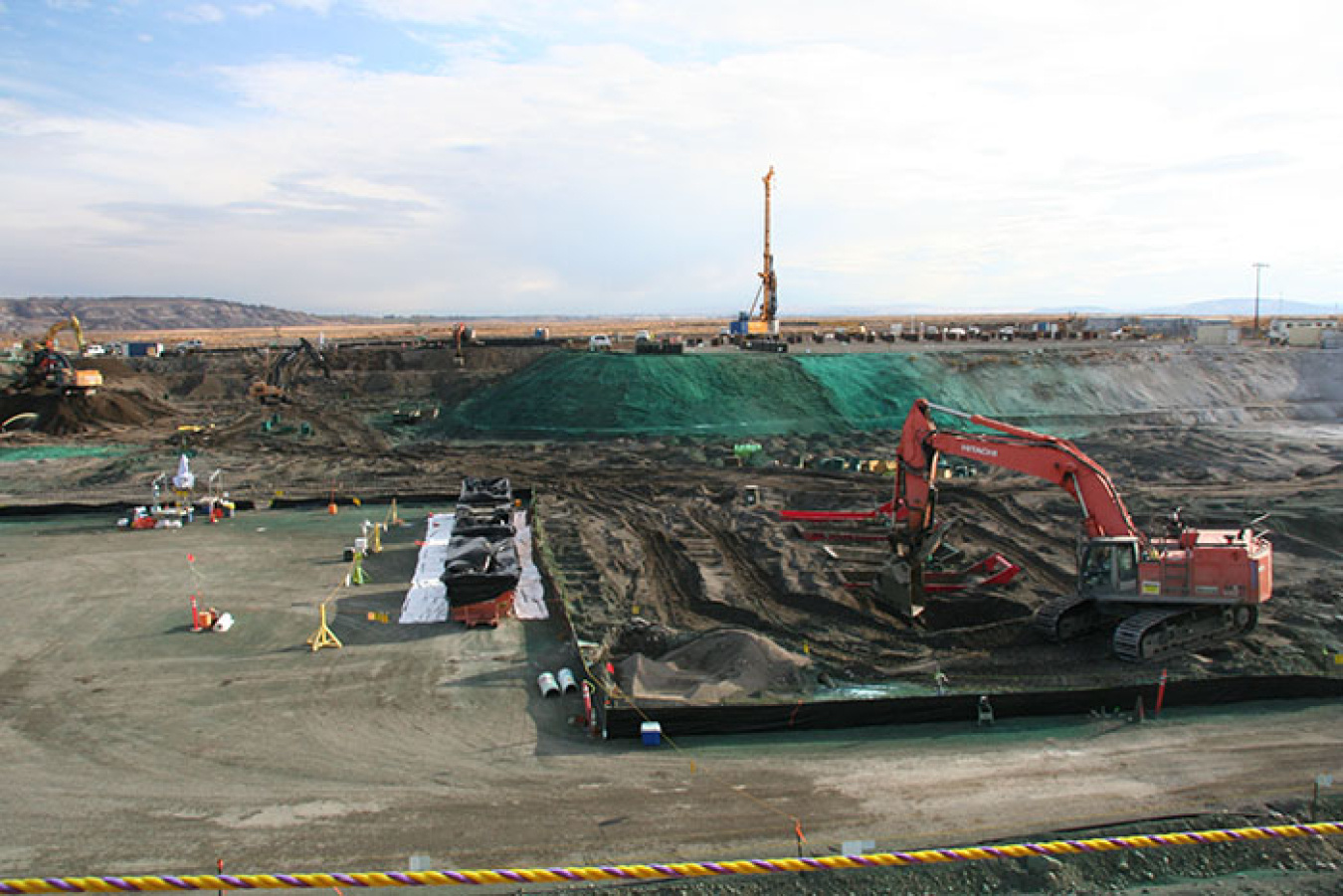
Workers survey an auger for contamination levels at Hanford’s 618-10 Burial Ground.

The 618-10 Burial Ground covers more than seven acres and is one of the most hazardous cleanup sites in the EM complex.
Project ahead of schedule and will continue augering beyond fiscal year 2016 goal
RICHLAND, Wash. – EM’s Richland Operations Office (RL) and cleanup contractor Washington Closure Hanford (WCH) are making tremendous progress cleaning up Hanford’s 618-10 Burial Ground, one of the most hazardous burial grounds in the EM complex.
From 1954 through 1963, workers disposed of highly radioactive and hazardous waste into 94 pipes buried vertically at the 7.5-acre burial ground.
To begin cleaning some of the pipes, workers drove steel over casings measuring 28 feet long and 4 feet in diameter into the ground around the pipes last spring. They began using an auger assembly to grind up the waste, piping material, and soil within the over casing in September. The next step will be to place the mixture in the over casing into a box, where it is mixed with grout and prepared for disposal. The WCH team is scheduled to begin retrieving the augered soil as soon as April.
Since beginning the augering process in September, the WCH team has completed augering 30 pipes as of Feb. 24, two more than were scheduled to be completed this fiscal year. Because of the efficient and safe operations, RL has directed WCH to continue the augering campaign.
Extensive preparations were needed before this work could begin. Workers mapped the locations of all 94 pipes and installed four steel tubes around the outside of each pipe for nonintrusive radiological characterization. By taking dose rates inside the tubes at incremental depths, workers could model the radiological composition of the highly contaminated waste in each pipe.
Meanwhile, WCH continues to clean the burial ground’s waste trenches. To date, workers have removed about 1,600 drums, some of which are concrete-lined and contain high dose rate items. Workers also have removed miscellaneous waste such as glove boxes and process equipment.
The burial ground contains waste generated primarily from Hanford’s 300 Area, where fuel metallurgical analysis was performed and new methods were developed to separate plutonium from nuclear fuel. These wastes consisted of metallurgical sample residues, samples from experiments, and other very high dose-rate, high-alpha contaminated wastes.
WCH will transfer the remaining work scope at 618-10 to another RL contractor before its contract ends Sept. 30. To date, WCH has demolished 324 buildings and cleaned up 574 waste sites, saving DOE more than $300 million through safe and efficient operations.
